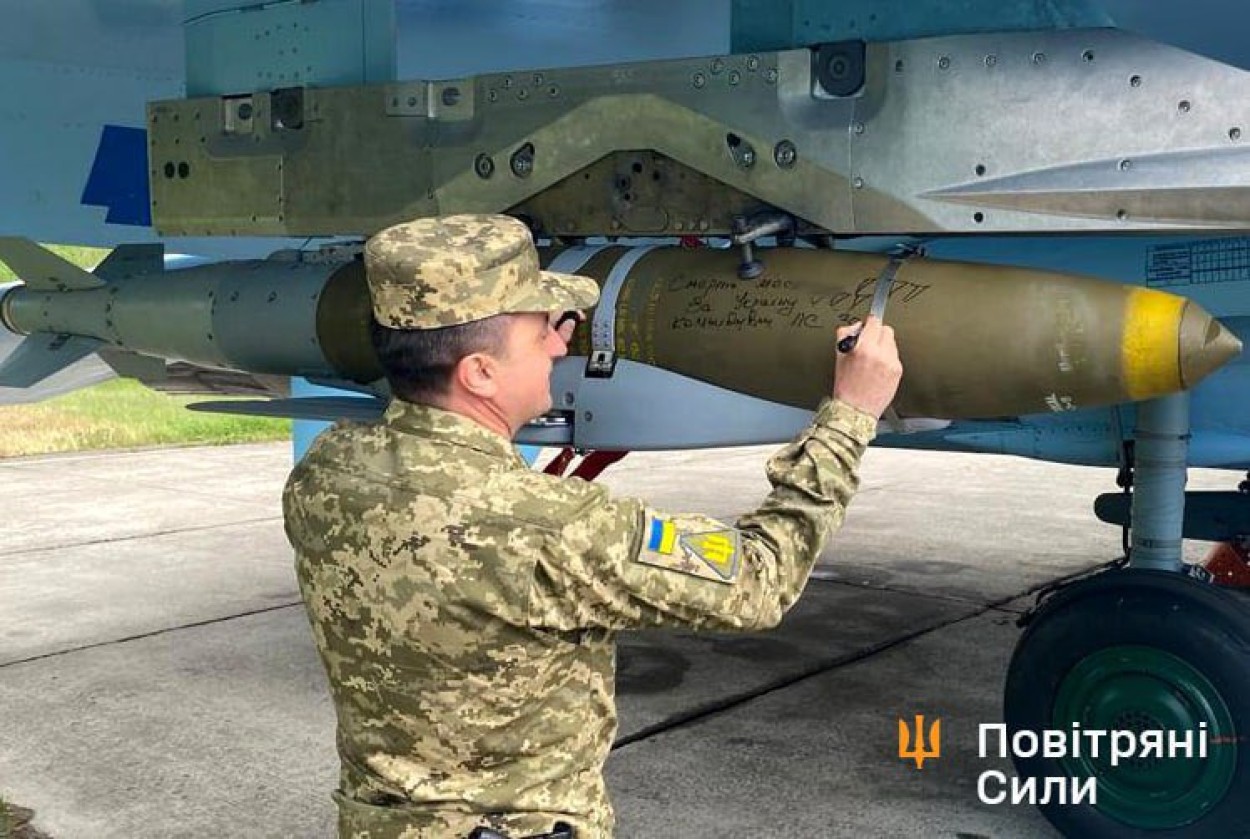Russian glide bombs are effectively striking Ukrainian positions, penetrating even subterranean bunkers and posing a significant threat to the troops, reported The New York Times, citing Ukrainian National Guardsmen.
Since March 2023, Ukrainian forces have been grappling with the devastating impact of glide bombs, a destructive force that even seasoned troops accustomed to artillery shelling find formidable.
Described by a Ukrainian National Guardsman with the call sign ‘Kit,’ the bombs are deployed in pairs, with eight bombing runs per hour, creating an ominous sound akin to a descending jet.
“It sounds like a jet coming down on you,” he said, “like hell’s gate.”
The report highlighted that towns and villages near the front line bear evident signs of devastation caused by these bombs. Orikhiv, formerly a vital command center, now stands in ruins, with its main street deserted and structures, including the school, reduced to rubble by massive bomb craters.
Additionally, the use of drones by the Russian Federation poses a severe threat to Ukrainian troops, impacting frontline supply routes and making travel by car extremely difficult. Drones have compelled Ukrainian troops to abandon vehicular transportation and resort to covering distances on foot, a move necessitated by the heightened risk posed by the technology.
In response to the frequent drone attacks, units have ceased using traditional vehicles, instead employing a makeshift four-wheeled buggy designed by volunteer engineers to carry stretchers. This alternative transport method is discreetly stationed under trees several miles from the front line.
While Ukrainian forces retaliate using FPV drones against Russian positions, they acknowledge that Russia has adopted and intensified this tactic and inundated frontline areas with drones in recent weeks.
The increased drone activity on both sides has proven lethal, prompting concerns among Ukrainian soldiers and commanders. Soldiers, including Kit, express the belief that Russia’s interest in drones is at a state level, while Ukraine heavily relies on volunteers and civilian donors for its drone program.
There is a prevailing sentiment that the government should take a more active role in bolstering the country’s drone capabilities.
Glide Bombs & Challenges Of Intercepting Them
Equipped with glide kits, the bombs offer the advantage of extended launch distances, minimizing exposure of the launching aircraft to enemy air defenses—a tactic analogous to the JDAM-ER kits supplied to Ukraine by the US.
Despite concerns about their quality, Ukrainian military officials warn that these glide bombs, when deployed by Russian warplanes flying at extremely low altitudes over the front line, have the potential to wreak havoc.
The Russian air force arms its fighter bombers with winged, satellite-guided bombs capable of precise strikes from tens of thousands of feet.
The particular use of UPAB-1500 and FAB-500 glide bombs has effectively kept Russian planes outside the range of most of Ukraine’s ground-based air defenses.
This not only impedes the Ukrainian Air Force’s ability to intercept Russian fighters before bomb deployment but also poses a severe threat to civilian infrastructure, which results in significant casualties and profound psychological effects on the population.
Russian Colonel Roman Kostenko, Secretary of the Verkhovna Rada Committee on National Security, Defense and Intelligence, said in December 2023 that the Armed Forces of Ukraine lack adequate means to counter these glide bombs.

On the other hand, Ukrainian Air Force spokesperson Yuriy Ignat emphasizes that attempting to intercept these bombs is neither practical nor rational, advocating instead for a strategy focused on attacking the launching planes.
Ukrainian soldier Olexandr Solon’ko previously also expressed, “Glide bombs are ‘one of the biggest fears’ among Ukrainian troops.” This sentiment underscores the heightened apprehension within the Ukrainian military regarding the impact and threat posed by these munitions.
“The Russians use them extensively,” Solon’ko wrote. “I can’t speak to their accuracy, but the weaponry is powerful.”
Beyond military considerations, the affordability of the guidance kits associated with these glide bombs aligns with the economic sensibilities of Russian military planners.
Priced at less than two million roubles (about US$24,000), these kits starkly contrast the hefty cost of a single Russian Kalibr cruise missile, valued at nearly US$6.5 million. This cost-effective approach further solidifies Russia’s strategic advantage in its military operations.
As stated, Ukraine has also received guided bombs through aid packages from the US, notably the JDAM (Joint Direct Attack Munitions) and the extended-range JDAM-ER.
These JDAM kits are crucial in transforming conventional unguided bombs into precision-guided “smart” munitions, enabling launches from various aircraft.
- Contact the author at ashishmichel(at)gmail.com
- Follow EurAsian Times on Google News




